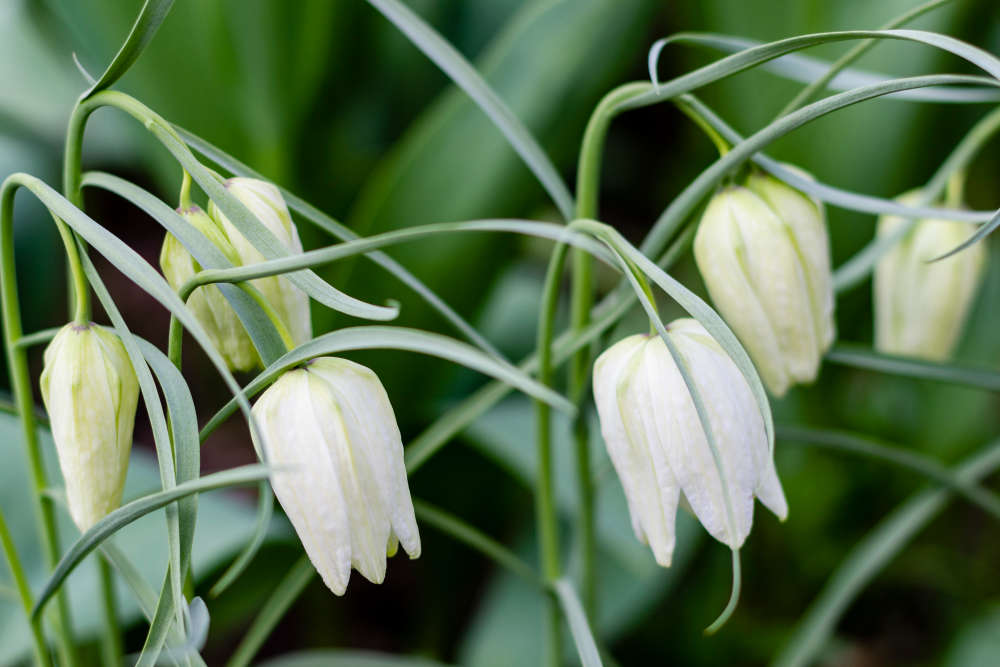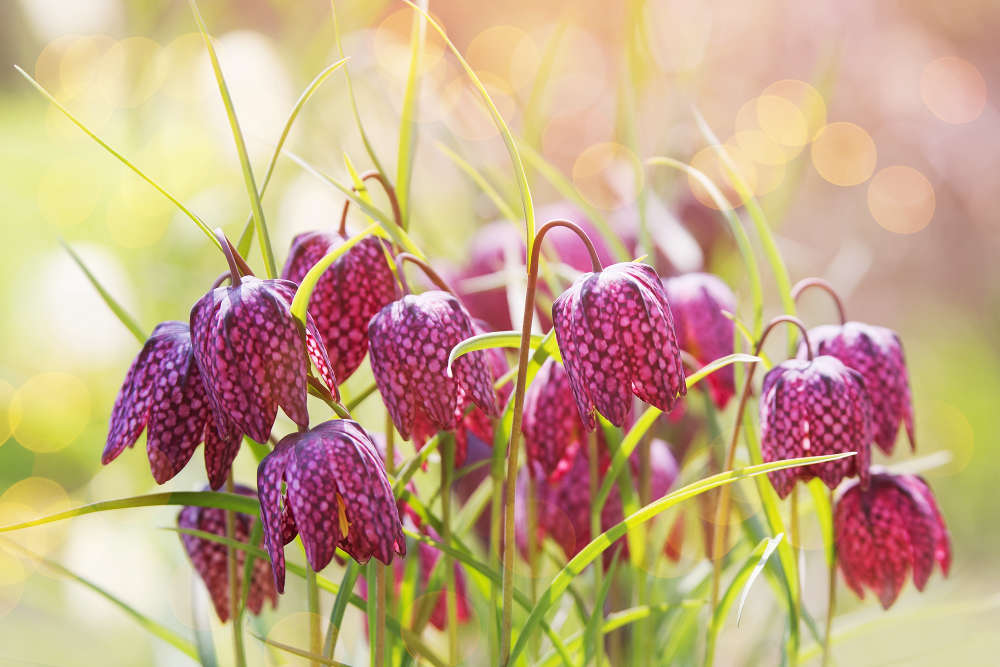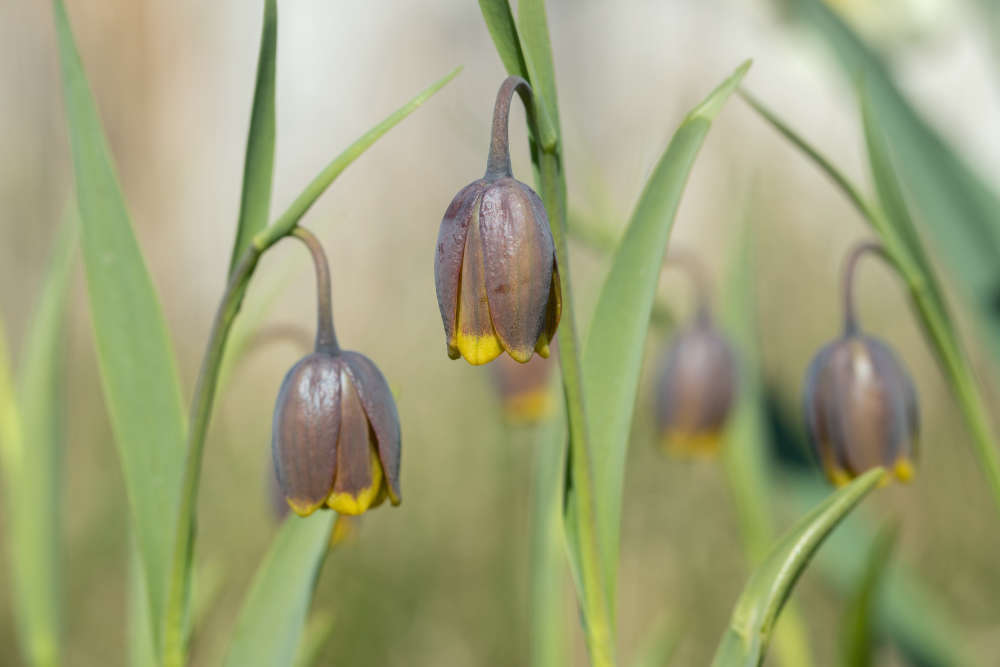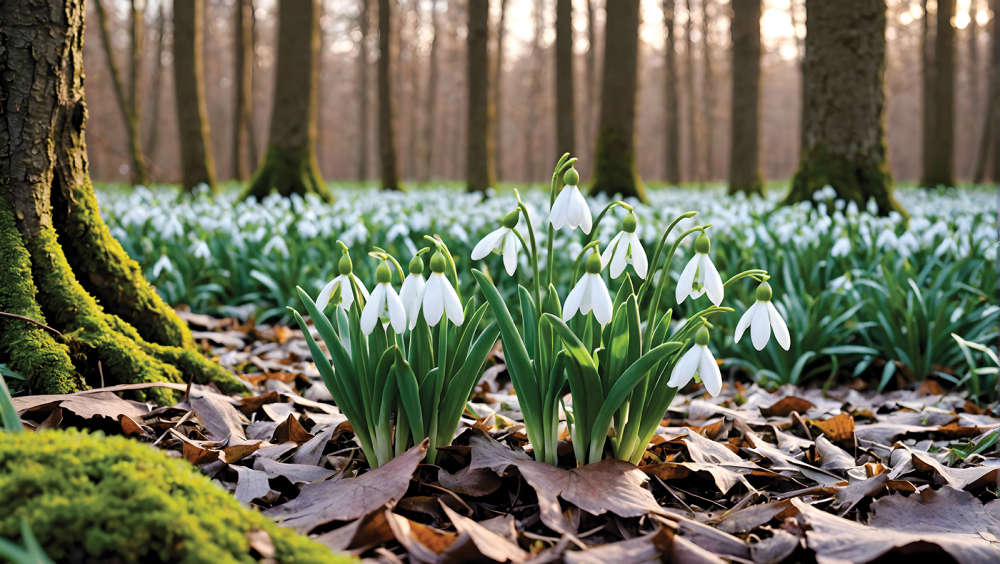
Fritillaria meleagris was one commonplace in our countryside, but its natural habitat of damp grasslands has declined to such an extent that wild colonies can now only be found in a few locations around the UK.
It is known by many different regional names, which is an indication of a long presence here; including Chequered Tulip, Meadow Lily, Chequerboards, Guinea Hens, (on account of the feathers’ speckled patterning, presumably?) and the ominous-sounding Leper’s Bells. However, Snake Head is the best-known moniker – the patterned buds and slender stems have a curious reptilian quality which adds to their mystique.
Fritillaries are offshoots, (excuse pun) of the lily family. Best started from bulbs planted in autumn, there are several types readily available. They are relatively easy to grow and trouble-free, although the dreaded lily beetle is attracted to them, so keep a watchful eye.

Meleagris, (approx. 30cms high) is the most easy-going and ideal for planting into rough, damp turf, where it will probably self-seed and make a colony. Allow the foliage to die back before mowing – typically August. The purplish chequered blooms are sometimes supplemented by a few naturally-occurring white flowers but albino forms are less vigorous – dark shades will always dominate.
Fritillaria uva-vulpis, (20cms) makes an unusual rockery specimen. Hailing from Turkey, this gorgeous interloper is hardy here, providing it has a sheltered, sunny spot in well-drained soil. It will also survive in a pot of gritty compost, (use an alpine-style mix).
Fritillaria persica makes a conical tower of temple bells approximately 60cms high. The hypnotic flowers have a surface ‘bloom’ similar to that found on ripe grapes and plums; indeed, ‘dusky plum’ best describes the colour. There is a creamy variation, ‘alba’, which will inject brightness into a planting scheme if all these Victorian gothic shades are getting a bit too much for you.

Varieties of Fritillaria imperialis, (‘Crown Imperial’) also produce bell-shaped flowers, but that’s where the family resemblance ends. Instead of dainty, nodding fairy bells, their chunky, thumb-thickness stems soar 90cms high and carry vivid flowers in eye-popping citrus shades, finished with a quirky ‘topknot’ of foliage. ‘William Rex’ has foxy red blooms. ‘Orange Beauty’ makes a great show combined with the sulphur yellow of ‘Lutea’, sometimes labelled ‘Lutea Max’, on account of its ability to grow tallest of all – perhaps 1.2 metres when happily established. Imperialis bulbs are expensive and require specific conditions, so think carefully before you buy – can you provide them with an open, sunny spot in well-drained, humus-rich soil? They require deep planting; (approximately 25cms) otherwise will cease flowering, sulk and die away, but, if you can manage their Goldilocks demands, with everything 'just right', they’ll make extraordinary, architectural additions to a border.

 Blooming Times: Harbingers of Spring
Blooming Times: Harbingers of Spring
 Homes Extra: Home Sanctuary
Homes Extra: Home Sanctuary
 Home Style: Ancient & Modern
Home Style: Ancient & Modern
 Blooming Times: Happy Faces
Blooming Times: Happy Faces
 Blooming Times: Winter Sparklers
Blooming Times: Winter Sparklers
 Homes Extra: Restore, Repair, Recycle
Homes Extra: Restore, Repair, Recycle
 Home Style: A Scandi Winter's Tale
Home Style: A Scandi Winter's Tale
 Blooming Times: Winter Wonders
Blooming Times: Winter Wonders
 Home Style: Bold, Brave & Beautiful
Home Style: Bold, Brave & Beautiful
 Blooming Times: The Answer Lies in the Soil
Blooming Times: The Answer Lies in the Soil
 Blooming Times: Heavenly Hyacinths
Blooming Times: Heavenly Hyacinths
 Legendary Builds with Phoenix Construction Services
Legendary Builds with Phoenix Construction Services
 Blooming Times: Know Your Enemy
Blooming Times: Know Your Enemy
 Bespoke Dreams from Eridge Green Kitchens
Bespoke Dreams from Eridge Green Kitchens
 10 Hot Years: iFit Fires & Flues
10 Hot Years: iFit Fires & Flues
 Home Style: Bold Type
Home Style: Bold Type
 Blooming Times: The Sky's the Limit
Blooming Times: The Sky's the Limit
 Home Style: A Better Way of Life
Home Style: A Better Way of Life
 Homes Extra: Shed Space
Homes Extra: Shed Space
 Blooming Times: Top of the Pots
Blooming Times: Top of the Pots